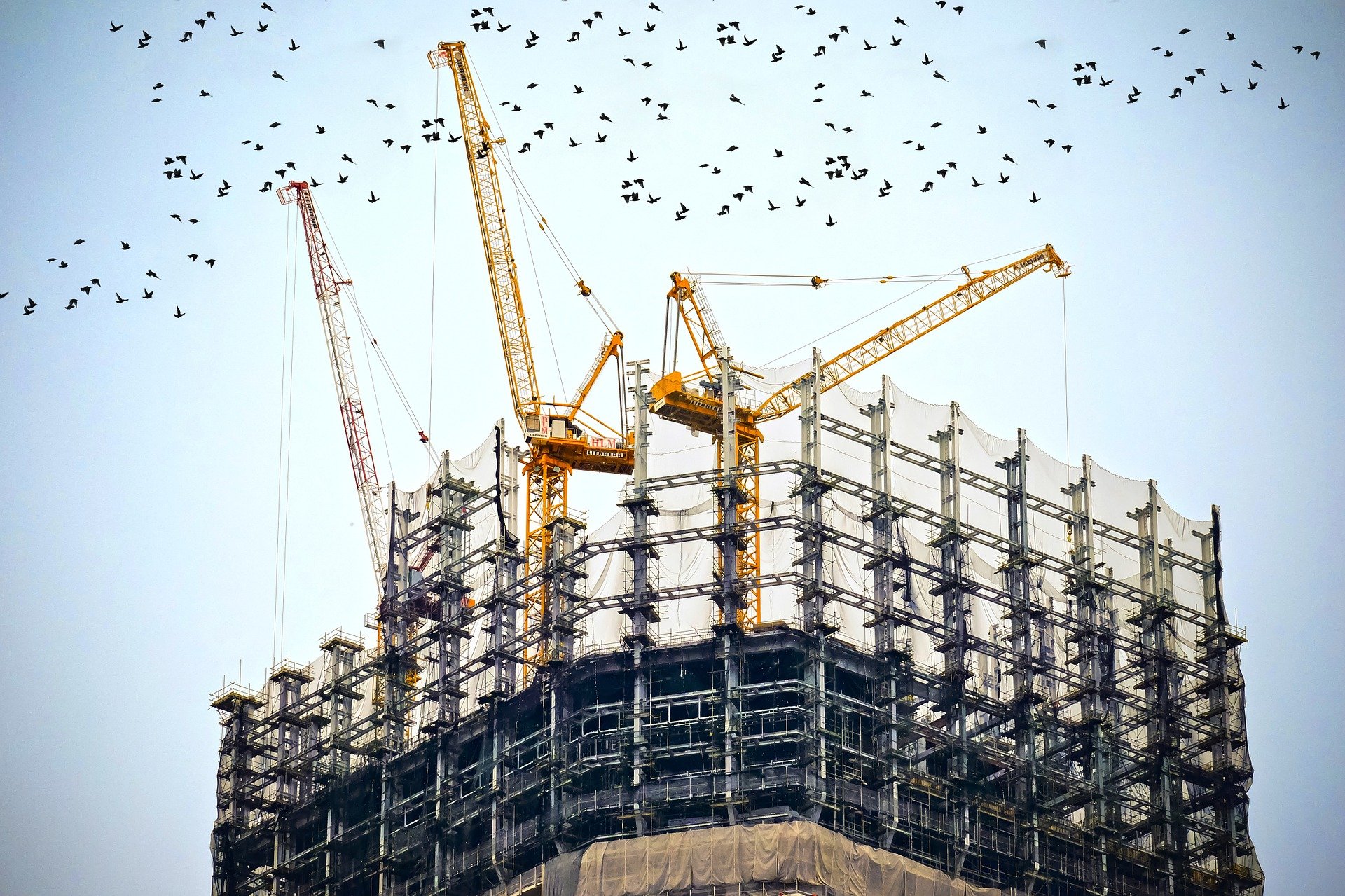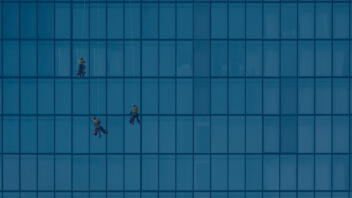Every business that employs a large labor force is aware of legal issues that stem from employment matters. With the possibility of current and former employees pursuing legal action against the employer, measures need to be taken by the company and by the individual owners to protect themselves before things take a turn for the worst. The key is to have implemented a legal asset protection plan before something happens that places the company and its owners at risk.
Without asset protection, a business owner can be held personally accountable for a judgment stemming from an employment lawsuit. One employee could chalk something up to a “little issue” that consequentially ends up being a “big issue” for the company’s owners and their accumulated wealth.
Construction companies are particularly vulnerable to employment issues. Having employees spread out across several job sites makes supervision difficult. Not to mention, construction sites can have several site safety hazards. Sometimes even the best crew can make a mistake that results in injury on the job site.
Understanding a company’s vulnerabilities to litigation is crucial for Ownership. Once the risks have been identified, the company can move towards full compliance. Below I have outlined and discussed some of the most common employment liabilities construction companys face.
OSHA Claims and Job Site Safety
For construction companies, OSHA claims regarding job site safety are a common starting point for civil actions. To protect against violations, we encourage companies to confirm every job site is maintained per OSHA code and that regular surprise inspections be performed to ensure site compliance at all times.
If an internal inspection uncovers a violation, your company has the opportunity to correct it before an incident occurs or a complaint is filed. This internal regulation helps the company avoid violation fees and catch safety hazards early.
OSHA’s standards are meant to prevent accidents and injuries. If a job site does not meet standards, employees are much more likely to have an accident and be injured on the job. OSHA has increased their violation penalties to match inflation and cost of living increases. These increases were made effective beginning January 2021, and the penalties will only continue to increase each year to keep up with economic adjustments.
The 10 most commonly cited standard violations in OSHA inspections for construction sites are as follows:
- Fall protection
- Hazard Communication
- Scaffolding
- Control of hazardous energy (lockout/tagout)
- Respiratory Protection
- Ladders
- Powered Industrial Trucks
- Fall Protection Training Requirements
- Machinery and Machine Guarding
- Eye and Face Protection
To prevent safety issues, construction company owners must ensure each job site is practicing workplace safety and is meeting OSHA standards. Best practices would be to ensure the company is consistently reviewing its safety standards and adjusting as needed.
COVID Prevention on the Job Site
A new duty of construction employers is implementing and maintaining COVID-19 controls and prevention protocols. OSHA outlines suggested guidelines for job site protection, including PPE, requesting advance notice of all visitors to a job site, and other safe practices to aid in preventing contractors and workers on the job site from contracting COVID-19.
With local orders and varying enforcement from one jurisdiction to another, today’s OSHA guidelines are just that – guidelines – and do not establish a legal standard or regulation.
Although there are no current legal regulations demanding a construction company abide by OSHA recommendations, an employee can still bring an action against the company should they contract the virus on the jobsite. It can be very costly to defend an action brough against the company, not to mention any settlement payouts.
There is a lack of legal precedent to understand how the courts will decide employer liability as it relates to the pandemic. It would be in the companys best interest to not set the legal precedent through court action. The take away here is the overwhelmingly clear need for asset protection to safeguard your business assets and personal assets from lawsuits in the future.
Sexual Harassment Prevention Diligence
Another common basis for workplace legal action is sexual harassment. Any unwelcome sexual advance or misconduct on the job site that creates a hostile work environment qualifies as sexual harassment, regardless of the gender identity of the harasser or victim.
The best way to prevent sexual harassment is by creating a workplace that has a zero-tolerance policy. Every business should have a clear sexual harassment policy in the employee handbook. The handbook should include:
- What constitutes sexual harassment at your company
- How to file a sexual harassment complaint and what happens after filing
- A firm no-tolerance policy outlining consequences for violations
Additionally, construction companies should institute sexual harassment prevention training for all tradesmen, journeymen, jobsite supervisors, and company managers, regardless of age or gender. There should also be separate training for supervisors on how to handle harassment complaints.
When employers receive a complaint, each complaint needs to be fully investigated and consequences pursued with diligence. An overlooked complaint from an employee is grounds for legal action against the company.
Class Action Employment Issues
Construction owners need to prepare and protect against class action employment issues. As some of our clients say, “It’s not a matter of IF I will get sued, it a matter of WHEN,” and we want you to be on the right side of the game.
At Sollertis, we have previously represented dozens of contractors. Our clients have almost always had one or more pending labor law claims against them. It can be difficult for employers to realistically follow every single requirement down to the letter without help. Sollertis can help you protect yourself and solve issues before they even become issues.
Class action lawsuits are often the most damaging for business owners. They are typically over wage and hour claims and can result in millions of dollars spent on settlements, penalties, and legal fees.
While some employers have employment practices liability insurance (EPLI), some claims are not covered under those policies. Class actions are often one such example.
Construction Defect Claims
Employment issues are among the most common, but another typical legal issue for construction companies is construction defect claims. Construction defect claims can cover any problem with the construction materials or the design of the plans. These could be caused by:
- Errors made by the architect or design team
- Poor workmanship in completing the job
- Manufacturing defects in the goods you purchased from your supplier
If your customer finds a construction defect, they have grounds to file a lawsuit. Should that defect result in an injury, the lawsuit now becomes more intense and the fight is uphill.
To help prevent construction defect claims, materials received from suppliers should have guarantees, and those products then need to perform as designed. With these precautions and preventive measures, companies can help protect themselves from construction defect claims.
Labor Skill Training
Construction companies have a reasonable duty to verify that employees are well-trained and can perform their jobs thoroughly. Poor performance on a construction site can cause significant problems for the other trades that follow and for the job overall.
Some trades require a license, so the state or a third party qualifies that a worker knows how to do their job. When there is no license to obtain, it is the company who must address the skill of its labor force.
Solutions to Compliance
The best way to smoothly maintain compliance with all the state, federal, and local agencies and unions is to proactively consult with a lawyer in this area to set up your business and personal asset protection plan to shield against legal actions.
We hope you never need to defend an action, but whether it’s an employment issue, construction defect claim, or OSHA compliance matter, the easiest way to avoid a claim is to ensure there are little to no grounds for a claim to exist.
Next Steps for Protection
The construction company and the business owner need to have complete confidence that standards are up to date and procedures are consistently enforced for employees, customers, and vendors. The potential for personal liability on the owner is one of the most significant motivators we see for clients to pursue asset protection, because with one job site accident they understand your hard-earned wealth and future of their family could be wiped out.
Protect yourself personally and avoid claims against your company by getting the advice to do things right the first time. The team of attorneys at Sollertis help you prevent and prepare for legal issues. You deserve a solution that fits your needs and the experience that comes from qualified lawyers who can help you achieve true financial freedom.






